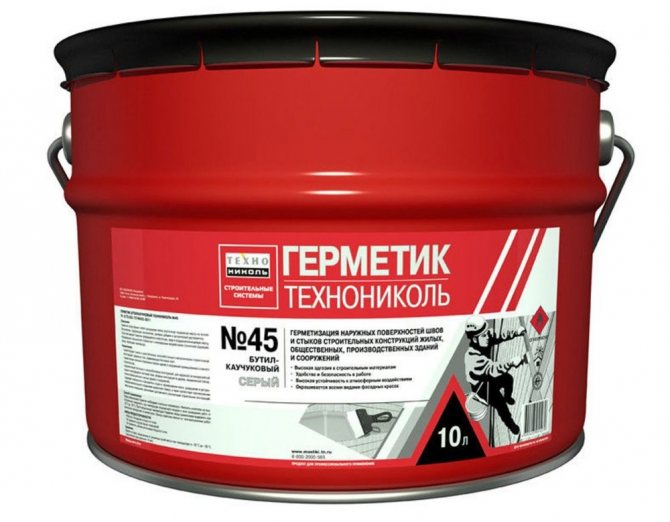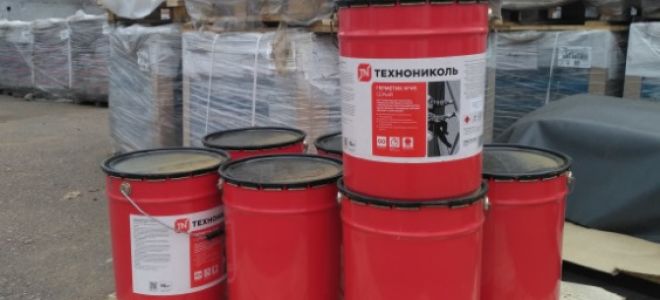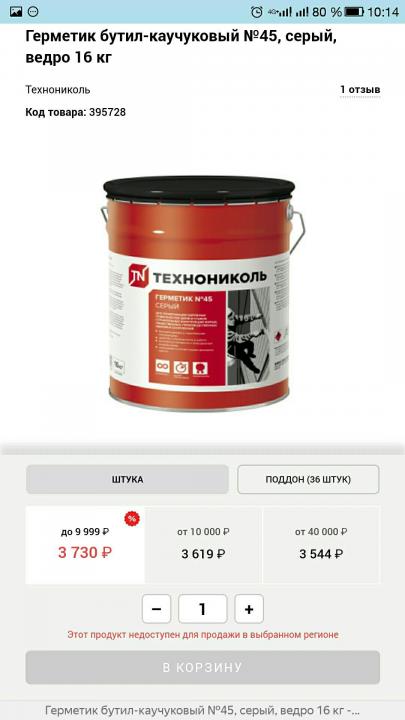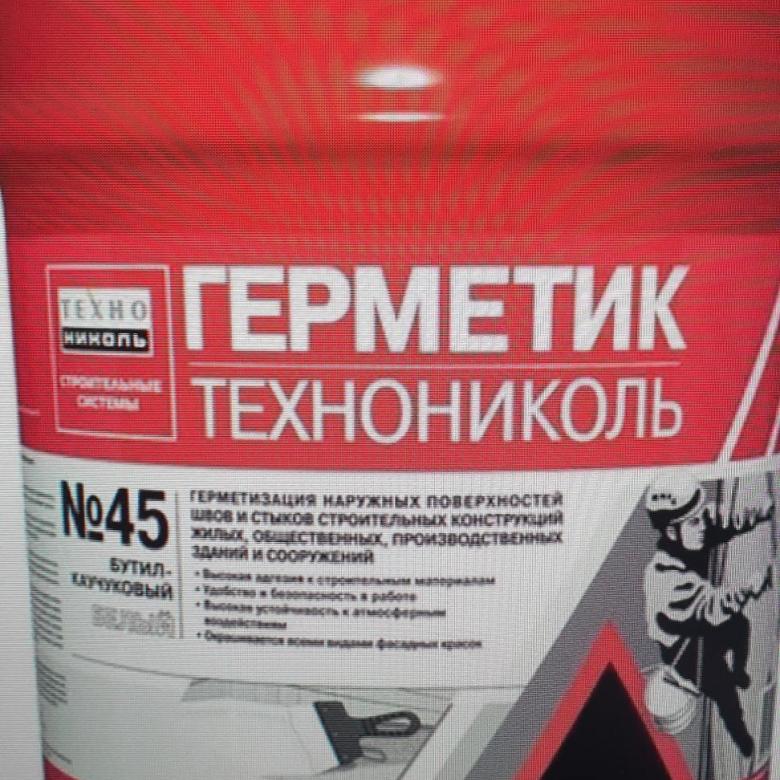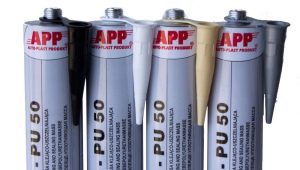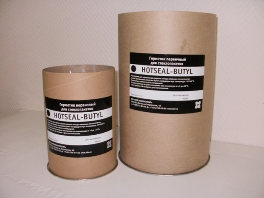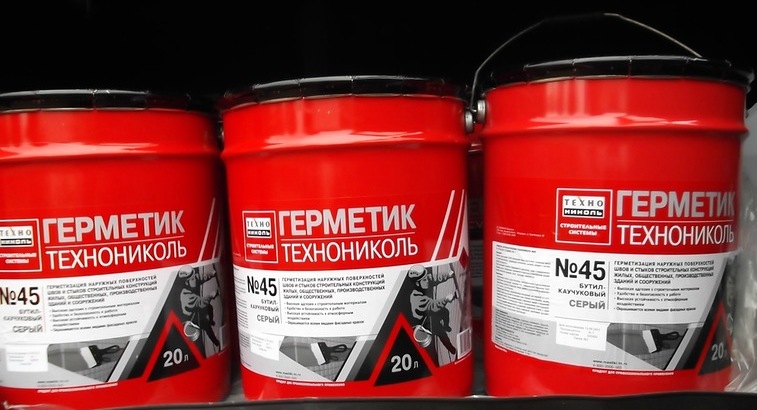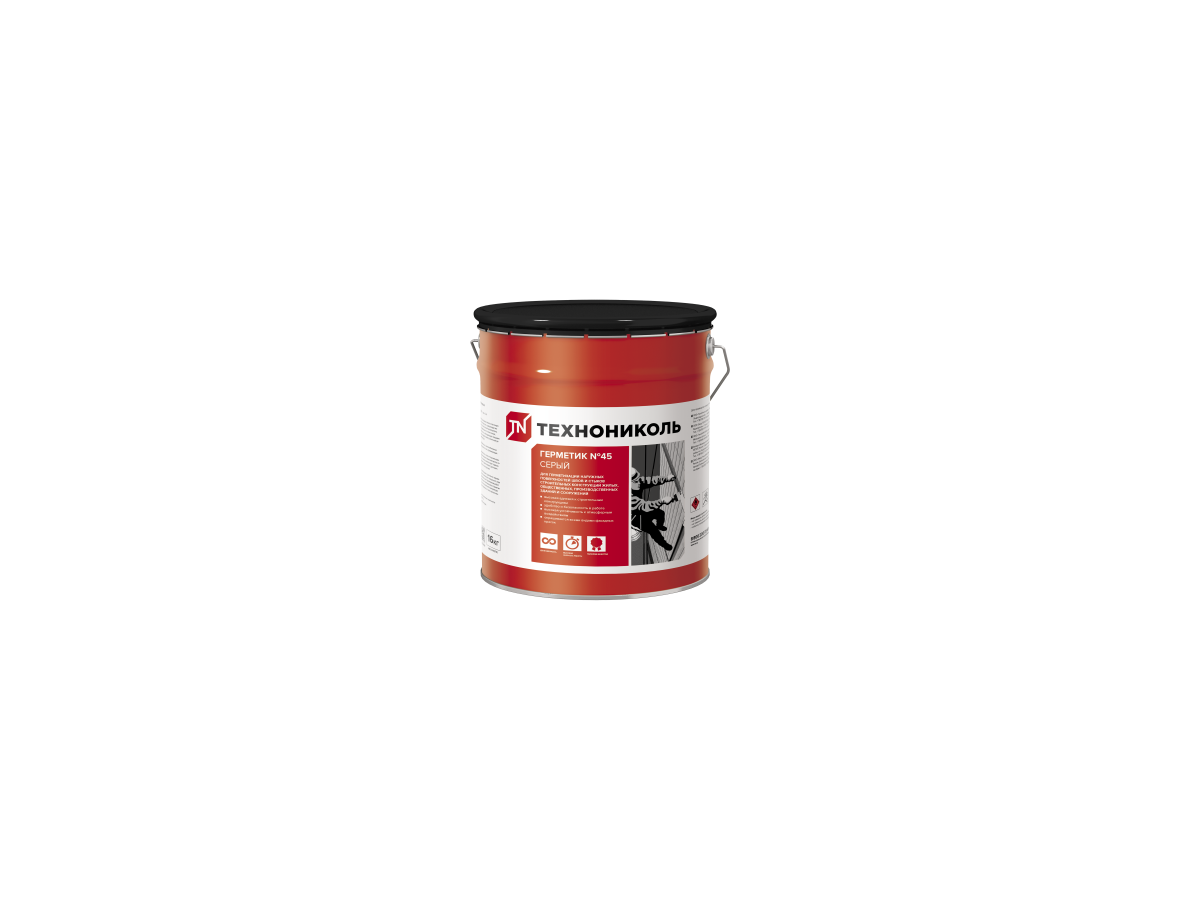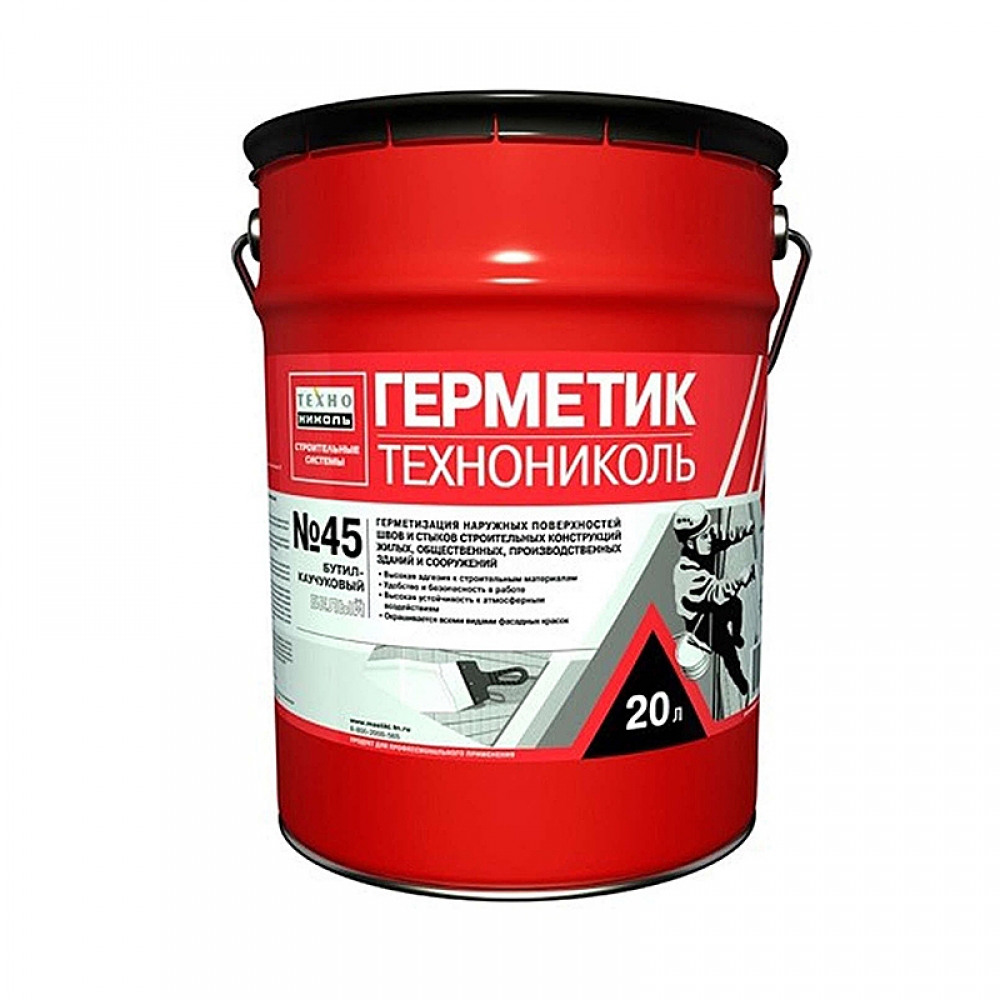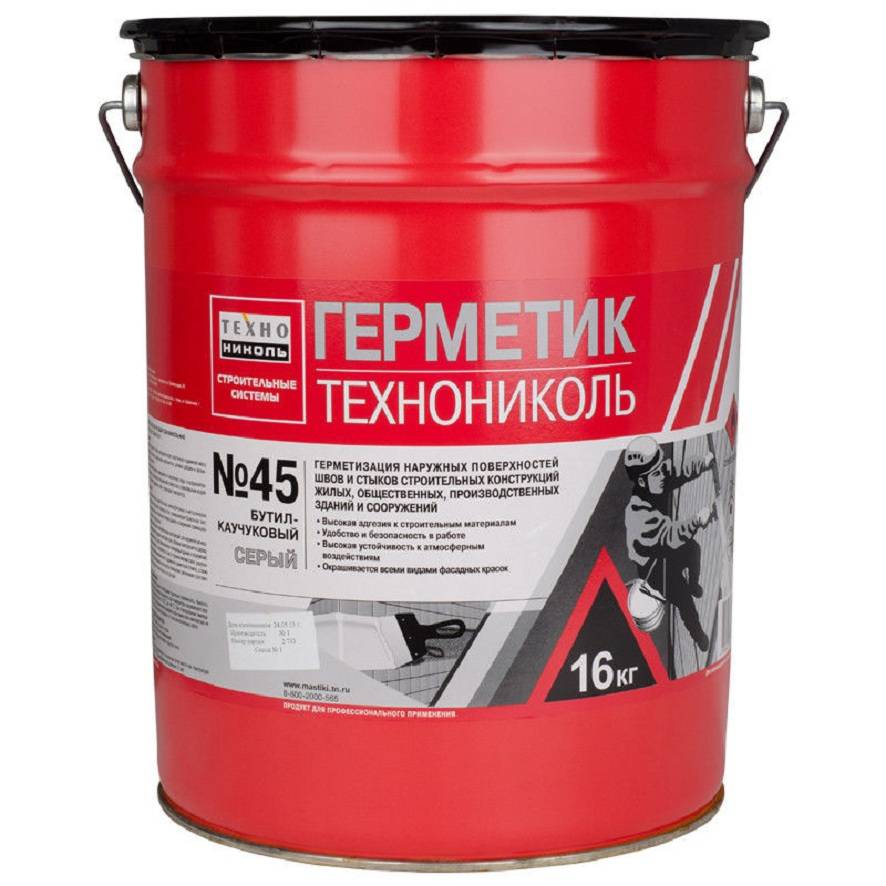Sealing materials
For sealing, sealing materials are used, which include:
- roll and sheet materials;
- mineral building materials of penetrating action;
- polymer-based liquid application materials.
In addition to polymers, sealing materials contain various fillers and hardeners - vulcanizing. Sealing materials are used in the form of pastes, putties, mastics and self-adhesive tapes, sometimes in the form of a solution in organic solvents, wax. The sealing material is formed as a result of hardening on the actual joint or at the point of contact of the surfaces to be sealed. Sealing materials must be strong and elastic, resistant to aggressive media and temperature changes. Sealing materials for the protection of parts and blocks of electrical appliances must have electrical insulating properties.
Varieties
Sealant "Vikar"
Butyl rubber hermetic material "Vikar" is especially popular because it is endowed with a number of properties and advantages. It is a homogeneous mass, which includes artificial rubber, bitumen, filler, solvent, technical additives.
It is durable, waterproof, elastic, has good adhesion to substrates such as concrete, metal, tiles, ceramics, PVC, natural stone. The sealant is durable, UV and temperature resistant.

With its help, they perform:
- sealing joints, connecting seams in order to increase heat resistance (internal / external work is allowed);
- sealing the joints of sandwich panels;
- roof sealing;
- sealing of ventilation systems, chimneys;
- sealing of seams in car vans, bodies in order to prevent corrosion.

Also sealant "Vikar" is produced in the form of tape of different sizes and colors: gray, black, dark gray. The tape is a double-sided self-adhesive material that does not absorb moisture. It does not need to be heated during use. Most often it is used for sealing the joints of sandwich panels, stained glass windows, facades, rigid roofs, ventilation systems. It is used for connecting vapor barrier elements, gluing and gluing fabrics and parts, and also as a cushioning material in plumbing, ventilation, and sewer systems.

Orgavyl Sealant
Another quality butyl hermetic material produced by the American manufacturer Orgavyl. Its area of application is somewhat different from other butyl sealants: it is used for car glass, for sealing auto optics (headlights).
Orgavyl sealant is especially popular due to the fact that it:
- does not form cracks;
- does not dry out;
- provides high-quality sealing, waterproofing;

- can be used many times, just reheating is enough;
- has a high degree of moisture resistance;
- resistant to antifreeze and various oil substances;
- non-toxic, odorless;
- endowed with good adhesive properties;
- does not require time to harden;
- does not stain auto optics parts;
- prevents fogging of car headlights.


Besides all the benefits, the sealant is easy to use. For this you need:
- clean the headlight;
- stretching slightly, place an airtight tape on it;
- warm it up with a hair dryer and attach the glass, pressing well.
It is produced in the form of a black tape of a certain size.
For the features of butyl sealants, see the following video.
Advantages and disadvantages
Before purchasing, it is recommended to carefully study the advantages and disadvantages of this sealant. Its advantages are:
- lack of toxic volatile components;
- optimal thermal conductivity and air permeability;
- excellent adhesion to metals, alloys and other popular materials;
- high elasticity;
- tolerance of temperatures from -55 to +100 degrees during operation;
- long service life;
- safety for people, animals, the environment.
Such sealants dry quickly, they can be applied to a wet surface, so the quality of adhesion will not change. The funds have an affordable price, especially when bottled in large containers.
There are also disadvantages to sealants. They are not available in color, although adding pigments or dyes can fix this problem. With frequent temperature changes, the seam can lose strength and elasticity. Due to the loss of elasticity, it begins to crumble, crack, tear.
Compared to other types of sealants, butyl ones have a less wide range of applications. Also, the funds do not tolerate the action of ultraviolet radiation: if the sun's rays often hit the surface of the seam, they destroy them, which can lead to depressurization of the parts. Nevertheless, many modern formulations do not have such a disadvantage.
Varieties of sealants
Most butyl sealants require special application conditions: they must be warmed up before curing. But thanks to modern additives, some materials require only a cold method of application, their deformation and strength characteristics are achieved even without heating. Usually, compounds that are applied by the cold method are used only for external work, while after heating, sealants can well be used on internal ones. Examples of quality products are butyl sealant "TechnoNikol 45", "Titan", "Vikar", "Orgavil" and others.
Sealant "Vikar"
This butyl rubber sealant has many advantages, therefore it is widely used in production and repair. The composition includes bitumen and rubber, as well as fillers, solvents, targeted technical additives. With the help of a sealant, you can work on concrete, tiles, ceramics, natural stone, PVC, metal, it sticks to silicone, and other types of sealants.
The product is distinguished by moisture resistance, long service life, elasticity, and due to its improved composition, it is well tolerated by ultraviolet radiation. The sealant does not react to other atmospheric factors and has high strength characteristics. "Vikar" is used for the following purposes:
- strengthening of connecting seams, joints inside and outside the premises;
- increasing the heat resistance of buildings;
- sealing gaps between sandwich panels;
- sealing of roofs, chimneys, ventilation systems;
- repair of seams on the car body, corrosion prevention.
The product can be found on sale in different forms: in the form of a paste, packaged in 310 ml tubes (gray, black), in ribbons of the same colors. The tape is easy to use, therefore it is highly appreciated by professionals. It is a double-sided adhesive film that is not afraid of moisture, applied to surfaces without heating. Usually, using tape, they repair stained glass windows, roofs, ventilation pipes, connect vapor barrier elements, apply it when installing water supply and sewerage systems.
Orgavyl Sealant
This black ribbon sealant is available in the USA from Orgavyl. Most often it is used for sealing holes in car windows, for sealing auto optics during installation. The product is of high quality and has a lot of advantages:
- does not crack, does not shrink;
- provides reliable sealing, protecting joints from dirt and water;
- possesses a high degree of moisture resistance, oil resistance, does not deteriorate from the action of chemicals;
- does not emit toxins, odorless;
- dries quickly;
- does not leave stains.
This sealant is easy to remove even after application: you just need to warm up the joint well and then remove it. It is possible to reuse the removed material, it does not lose its properties. It is enough only to heat it with a building hair dryer and apply a plastic mass to the surfaces to be treated. The sealant has only one drawback - the high cost, although its consumption for sealing auto optics is quite small.
Sealant "TechnoNicol 45"
The product under this brand is positioned as a sealant for professional use. It has many advantages - it dries in just an hour, resistant to temperature changes and any atmospheric factors. The sealant is indispensable for strengthening seams and waterproofing building structures made of any material. Also, the composition is used for anti-corrosion protection of steel buildings, for protection against destruction of ceramic, glass, modular wooden options.
The sealant is characterized by a small consumption per 1 m.For example, for 1 m of a seam 1 cm wide, 5 mm deep, only 45 g of the composition will be left. "TechnoNikol 45" is sold in buckets of 8-16 kg, it is easy to find it in any hardware store. Operation of products after drying of the joints is possible at temperatures of -50 ... + 80 degrees. It is necessary to work with butyl compounds in compliance with safety measures, avoiding contact with the skin, inside the body, using protective clothing and gloves.
Top 5 best articles
What is Butyl Tape
Butyl tape is a modern sealing material that is widely used in private and commercial construction.
More details ...
Soundproofing in factories and manufacturing plants: requirements and materials
During the design, construction and reconstruction of industrial premises, great attention is paid to the issues of sound and vibration insulation. Constant noise from operating equipment negatively affects the health of employees
More details ...
Sealing correctly: how to apply mastic
Joints, cracks, seams worsen the thermal insulation properties of the building. Through them cold and moisture penetrate into the room, condensation accumulates - a source of dampness and mold.
More details ...
How to soundproof a recording studio
The decibel level in recording studios is sometimes off scale. Rehearsals, recording, mixing, scoring, dubbing - all this causes considerable inconvenience to neighbors if the sound leaks through the walls, floor or ceiling.
More details ...
Review on soundproof membranes Liplent Zee and Zeke
Mineral membrane Liplent Zee and a similar product Liplent Zik with a self-adhesive layer are ultra-thin soundproofing materials with the same properties, but some differences in installation.
More details ...
Advantages and disadvantages
Any building material is endowed with advantages and disadvantages. Before buying or using this or that sealant, you need to study all the pros and cons of the material.
Among the advantages of butyl sealants are the following:
- no volatile components;
- a high degree of adhesion to many substrates: it adheres perfectly to aluminum, glass, steel;
- low vapor permeability and thermal conductivity;

- increased degree of elasticity, strength;
- resistance to ultraviolet rays;
- affordable price range;
- excellent tolerance to different temperature conditions: from -55 to +100 degrees;


- long operational period;
- safety for human health and the environment;
- short setting time, hardening;
- the possibility of applying to a damp surface.


Along with the many advantages of a hermetic material, there are only a few disadvantages:
- available only in black;
- loss of tensile strength at negative temperatures;
- narrow range of applications.
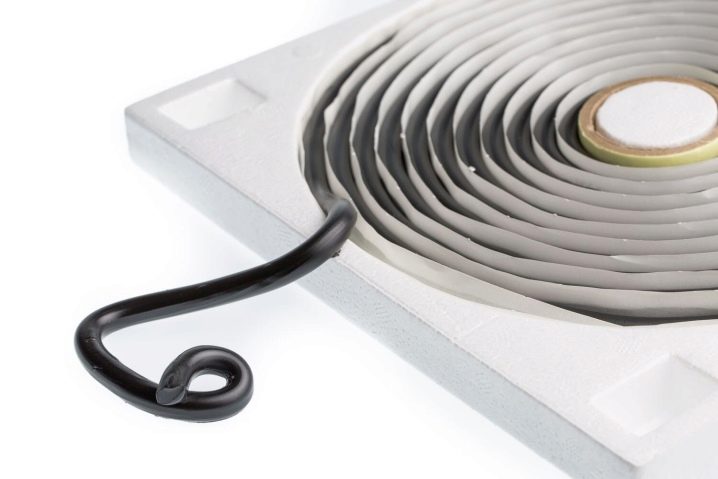
The ratio of positive and negative qualities of butylene sealant suggests that the material is reliable and of high quality.
Material application
|
1. A device for sealing horizontal interpanel seams (precast reinforced concrete, monolithic concrete, brickwork, foundation blocks, stone materials, metal, etc.) 1.1 Surface preparation (sealing cracks, sealing joints, abutments). 1.2 Primer application Butyl Primer, consumption 0.2-0.3 kg / m2. Application method: manual - brush, brush, mechanized - airless spray pump. 1.3 Application of the 1st layer of Hermabutyl 2MM mastic, consumption 0.25-0.35 kg / l.m. Drying of the 1st layer 24 hours at 25 C. 1.4 Application of the 2nd layer of Hermabutyl 2MM mastic, consumption 0.25-0.35 kg / lm. Drying of the 1st layer 24 hours at 25 C. Method of application: manual - brush, brush, mechanized - airless spray pump. Total consumption: 0.5-0.7 kg / lm. |
|
 |
2. A device for sealing vertical interpanel seams (precast reinforced concrete, monolithic concrete, brickwork, foundation blocks, stone materials, metal, etc.) 2.1 Surface preparation (sealing cracks, sealing joints, abutments). 2.2 Application of primer Butyl Primer, consumption 0.2-0.3 kg / m2. Application method: manual - brush, brush, mechanized - airless spray pump. 2.3 Application of the 1st layer of Hermabutyl 2MM mastic, consumption 0.25-0.35 kg / l.m. Drying of the 1st layer 24 hours at 25 C. 2.4 Application of the 2nd layer of Hermabutyl 2MM mastic, consumption 0.25-0.35 kg / lm. Drying of the 1st layer for 24 hours at 25 C. Method of application: manual - brush, brush, mechanized - airless spray pump. Total consumption: 0.5-07 kg / m2 |



Sealing - ensuring impermeability to gases and liquids of surfaces and joints of parts.
Sealing of surfaces is ensured by coating with materials impermeable to gases and liquids. The joints are sealed by using additional parts made of elastic material, or filling the gaps with sealing material.
Origin of the term
Goes back to the name of the ancient syncretic deity Hermes Trismegistus - (from ancient Greek ρμς ο Τρισμγιστος), Hermes the Three Times Greatest. Not to be confused with Hermes of Olympus, it was previously widely believed that Hermes Trismegistus was a real ancient prophet and sage, even in TSB he is called "the legendary Egyptian sage who is credited with inventing a way of blocking blood vessels." You should also distinguish between the concepts of tightness and tightness.
Sealing materials
For sealing, sealing materials are used, which include:
- roll and sheet materials;
- mineral building materials of penetrating action;
- polymer-based liquid application materials.
In addition to polymers, sealing materials contain various fillers and hardeners - vulcanizing. Sealing materials are used in the form of pastes, putties, mastics and self-adhesive tapes, sometimes in the form of a solution in organic solvents, wax. The sealing material is formed as a result of hardening on the actual joint or at the point of contact of the surfaces to be sealed. Sealing materials must be strong and elastic, resistant to aggressive media and temperature changes. Sealing materials for the protection of parts and blocks of electrical appliances must have electrical insulating properties.
Types of sealing
Sealing is an important condition for the operability of many devices, apparatus and devices, as well as a condition for normal and comfortable existence and functioning in buildings and premises. Some production processes, conditions for carrying out many scientific and research works require increased impermeability of the premises.
Sealing determines the reliability and durability of devices and devices. Some types of sealing:
- sealing threaded connections;
- sealing flange connections;
- sealing double-glazed windows;
- sealing the walls of buildings.
Sealing and repair of interpanel seams of industrial and residential buildings
Sealing and repair of interpanel seams, industrial and residential buildings, a very popular area of repair and construction work. Heat losses due to poor sealing of the walls cannot be taken into account, but there is no doubt that they are huge. Projects and experiments of Scandinavian and German scientists, builders and ecologists have proved the possibility of maintaining a comfortable temperature in an airtight building in winter without heating at all. The reasons for poor sealing of wall joints are design and implementation errors, aging of sealing materials.
Varieties
There are several varieties of butyl sealants.
"Vikar" is one of the most popular synthetic rubber materials. It has many advantages over other compositions, namely: it exhibits such qualities as high elasticity, strength, excellent adhesion to metal, tiles, ceramics, PVC, natural stone and porous substrates such as concrete.
"Vikar" is a plastic homogeneous mass, consisting of bitumen, rubber, filler, technical additives and solvent. Due to its composition, the material is particularly resistant to UV radiation and temperature fluctuations.


With the help of this composition, such types of work are performed as:
- reliable sealing of joints, as well as connecting seams in order to increase the heat resistance index, while its use is allowed for both internal and external work;
- sealing the joints of plastic panels;
- sealing of ventilation and air conditioning systems, as well as roofs and chimneys;
- reinforcement of seams in vans and metal bodies, which is performed in order to increase protection against the risk of rust and subsequent destruction of the material.


The Vikar sealant is sold in 310 ml tubes in dark gray and black versions, or in the form of a tape that looks like a double-sided moisture-resistant self-adhesive material.
This tape does not need to be heated before use, as a rule, such a modification of the sealant is used when working with panels, stained glass windows, ventilation systems and rigid roofing.
Orgavyl sealant is another butylene type of sealant quite popular with consumers, which is produced by the American company of the same name. His the scope of use is slightly different - it is manufactured to work with car headlights and glass.
This type of sealant does not form cracks, it does not dry out and at the same time forms a very high-quality waterproofing and sealing of auto optics. Such a composition can be used repeatedly, the simplest reheating is enough.
Orgavyl is resistant to antifreeze and all kinds of solutions of oil structure, it is highly adhesive, has no odor, and also does not stain car parts, and at the same time prevents the glass from fogging in the car.


To operate the sealant, it is enough to do a few simple steps:
- clean the headlights completely;
- place a sealant tape on it, after stretching it slightly;
- use a hair dryer to warm up the material and press firmly against the glass.
This sealant is available in several tape sizes.
The reliable composition "Hermabutil" is also very popular with consumers.
Butyl rubber sealant is a quality and practical material. They have a low cost and are sold in any hardware store.
For Orgavil Butyl Sealant for Automotive Headlight Assembly, see the following video.
Hermabutyl 2m. Scope and properties
Hermabutyl 2m sealing mastic is designed to ensure tightness of joints when making joints and construction seams, as well as for reliable connection of wall and structural panels, including window, balcony blocks, vertical slabs.
Such a sealant allows you to get the most reinforced adhesion of the component parts of the object being erected, for example:
- • Soft roof;
- • Construction slate;
- • Metal roofing material.
Hermabutyl category 2m copes with the task of waterproofing necessary for the construction of specialized structures as part of tanks and treatment facilities.
Hermabutil 2m mastic, as a rule, is already ready for use, without requiring preliminary heating of the substance or processing.
The material is perfectly distributed over the treated surface with a construction trowel and does not require the use of additional equipment. The applied material hardens at the natural temperature of the environment. Upon completion of the solidification stage, the substance acquires the properties of a rubber-containing material.
When carrying out work with the use of germabutyl, the recommended rates for the consumption of the substance should be observed. So, for 1 running meter of the treated surface, if the seam width is from 10 to 15 cm, you will need from 500 to 750 grams of construction mastic.
The sealant hermabutyl 2m, packed in convenient cans weighing about 3 kilograms, is especially in demand. The price for a product in this category will be about 106 - 130 rubles per can, depending on the brand of the manufacturer and the amount of purchased products.
Scope of use
The main area of application of butyl sealants is the production of insulating glass units. With the help of this material, all gaps and joints that appear during the manufacturing process are sealed. With its help, thermal insulation panels are glued to each other, as well as the existing air ducts and air conditioning systems in the room are sealed.
Some use such formulations to ensure the greatest tightness of all kinds of vessels and containers.


Separate formulations serve as the basis for the preparation of adhesive solutions, as well as for the manufacture of moisture-resistant fabrics.
Rubbers with a molecular weight of 10 to 25 thousand g / mol are used as thickeners for lubricants and additives.
Separate variants of sealants are used to work with automotive glass and auto optics.
Purchasing requirements
Whatever manufacturer's product is preferred, you should carefully study all the technical (quality) characteristics of the material, and when placing an order, pay attention to the presence of an appropriate quality certificate for the products sold. The main suppliers of finished products are represented by the following enterprises:
The main suppliers of finished products are represented by the following enterprises:
• LLC "Service for the construction completion", Perm;
• Company "TD Stroybat", Kirov;
• TSK "Real - Stroy", Chelyabinsk;
• LLC AVANGARD, Chelyabinsk.
Where is bitumen sealant used?
The main component is a modified bituminous binder. Thanks to him, the sealant has an elastic consistency and is easy to apply, demonstrates good adhesion even without careful surface preparation. Special fillers in the composition provide resistance to negative external factors - ultraviolet light, high humidity and mechanical damage.
The main field of application of bituminous sealant is roofing, but it is also used for other purposes:
- sealing metal roofs (corrugated board, metal tiles);
- fastening roofing material and other coatings based on bitumen;
- fixation of insulating materials (expanded polystyrene, polyurethane);
- sealing cracks in the drainage system and foundation;
- waterproofing of pillars;
- sealing joints in rooms with high humidity;
- repair of rubber parts.


The main field of application of bituminous sealant is sealing metal roofs
Choose Butyl Rubber Sealant Over Bitumen
This is necessary if:
- you plan to close up joints and connections in living rooms, so the task is to protect yourself and your loved ones as much as possible;
- want to work in any weather conditions, including in winter, and do not want to postpone sealing until summer;
- do not consider yourself an "ace" in construction and sealing, so you select the material that is as easy to use as possible and does not require complex skills.
If the task is clear and for other purposes the sealant is definitely not useful, for example, you need to seal the joints in the metal roof, onduline or strengthen the roofing ridge, stock up on a tube of bitumen - and get started. Make sure that the air temperature is above zero.
TECHNONICOL butyl rubber sealant No. 45
Waterproofing mastic is used to protect building structures made of wood, concrete or reinforced concrete from the effects of water. Mastics are often used for waterproofing a variety of pipelines and foundations. Another common area of their application is the device of waterproofing seamless coating in the basement, pool. Waterproofing mastics protect the air in the room from moisture oversaturation, and the walls of the structure from corrosion. Thus, the material of structures is protected from destruction and the operating period is increased.
TechnoNIKOL # 45 butyl rubber sealant is designed for sealing external surfaces, seams and joints of building structures of residential, public, industrial buildings and structures. Available in white and gray.
Peculiarities
- High adhesion to all building materials.
- Convenience and safety at work.
- High resistance to weathering.
- It can be painted with all kinds of facade paints.
- Product for professional use.
Application area
- sealing joints and seams of concrete, reinforced concrete and metal building structures, external walls, adjoining balcony slabs;
- sealing of window and balcony blocks of buildings and structures, both industrial and residential construction;
- waterproofing of concrete and reinforced concrete structures, for external corrosion protection of sheet steel structures, prefabricated structures made of wood, ceramic tiles, glass of industrial and residential buildings and structures;
- protects the surface and filler of the joint from moisture penetration, destruction and cracking of the interpanel joint (cement screed), and also prevents the penetration of moisture into the interior of the room, increases the durability of building structures.
Structure
The sealant is a homogeneous visco-elastic movable mass based on butyl rubber containing fillers, targeted additives and an organic solvent. After hardening, TechnoNICOL Butyl Rubber Sealant No. 45 turns into an elastic, water-tight mass with increased resistance to atmospheric influences (solar radiation, ozone, temperature extremes).
Material specification table
|
Parameter name |
№45 |
|---|---|
|
Appearance |
Color: gray, white |
|
Working stock density, kg / m3 |
800-1100 |
|
Conditional strength at the moment of rupture, MPa, not less |
0,2 |
|
Adhesion strength to concrete MPa, not less |
0,2 |
|
Elongation at the moment of rupture,% not less |
100 |
|
Mass fraction of dry residue,% |
Not less than 50 |
|
Drying time to "tack", no more, min. |
60 |
|
Operating temperature range, ° С |
from -45 ° C to + 45 ° C |
Manufacturing jobs
Before use TechnoNICOL Butyl Rubber Sealant No. 45 must be thoroughly mixed.Apply with a spatula to the prepared surface at an ambient temperature of -20C to + 40C. At low temperatures, the Sealant should be kept at room temperature for at least a day before use.
Sealant consumption depends on the type of work being performed.
Storage: Store in a dry, heated, protected from sunlight place at temperatures from +5 to + 30 ° C. The guaranteed shelf life is 12 months.
Security measures:
Avoid contact with skin and eyes. Do not use indoors. Do not use near open flames.


